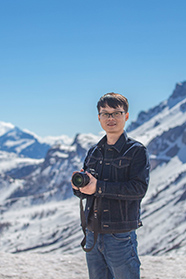Manifold Bootstrapping for SVBRDF Capture
Manifold bootstrapping is a new method for data-driven modeling of real-world, spatially-varying reflectance, based on the idea that reflectance over a given material sample forms a low-dimensional manifold. It provides a high-resolution result in both the spatial and angular domains by decomposing reflectance measurement into two lower-dimensional phases. The first acquires representatives of high angular dimension but sampled sparsely over the surface, while the second acquires keys of low angular dimension but sampled densely over the surface.
We develop a hand-held, high-speed BRDF capturing device for phase one measurements. A condenser-based optical setup collects a dense hemisphere of rays emanating from a single point on the target sample as it is manually scanned over it, yielding 10 BRDF point measurements per second. The second phase captures N=20-200 images of the entire sample from a fixed view and lit by a varying area source. We show that the resulting N-dimensional keys capture much of the distance information in the original BRDF space, so that they effectively discriminate among representatives, though they lack sufficient angular detail to reconstruct the SVBRDF by themselves. At each surface position, a local linear combination of a small number of neighboring representatives is computed to match each key, yielding a high-resolution SVBRDF. A quick capture session (10-20 minutes) on simple devices yields results showing sharp and anisotropic specularity and rich spatial detail.
- Date:
-
-

Baining Guo
Distinguished Scientist
-

Jinpeng Wang
Senior Researcher
-

John Snyder
Principal Researcher
-

Moshe Ben-Ezra
-

Xin Tong
Partner Research Manager
-

Yue Dong
Lead Researcher
-
-
